In today’s world, safeguarding valuable items has become increasingly important, leading many to consider how to build a vault room. A vault room is a secure space to store precious items such as jewelry, important documents, cash, and even family heirlooms. The importance and purpose of a vault room lie in its ability to offer unmatched protection against theft, fire, and other potential threats.
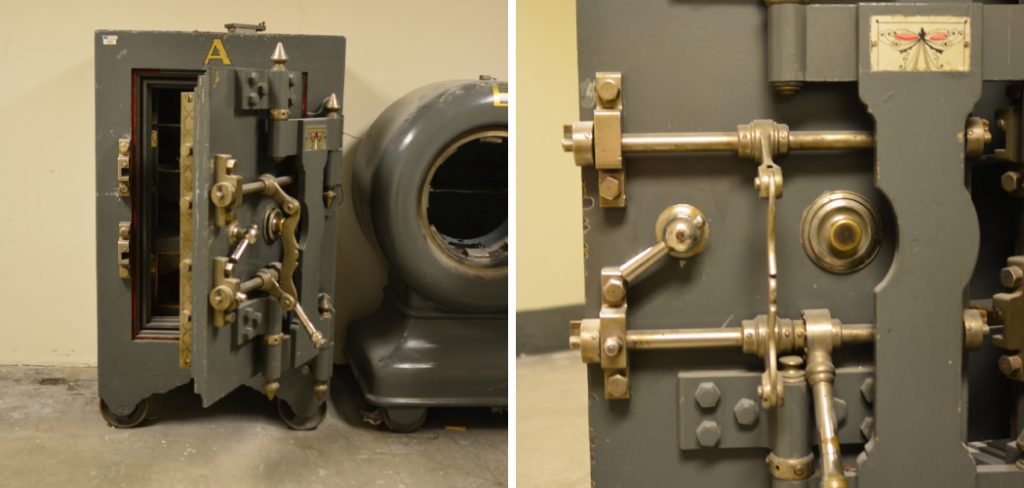
Key considerations in building a vault room include determining the purpose and size, selecting an optimal location within your home, consulting with professionals for design and security features, and ensuring compliance with building codes and legal requirements. The process of creating a vault room involves several steps: planning and design, gathering tools and materials, constructing the room, installing the door and locking mechanism, setting up electrical and ventilation systems, implementing security measures, and customizing the interior. Learning how to build a vault room ensures the safety and security of your most treasured possessions.
Planning and Design
When considering how to build a vault room, the first step is determining its purpose and size. The function of the vault will guide you in deciding the appropriate dimensions and features. For instance, if you plan to store large items like artwork or furniture, you’ll need a more spacious vault than one meant solely for documents and jewelry. Assess your needs carefully to ensure the room meets all your storage and security requirements.
It is crucial to select the right location within your home or property. Ideally, the vault room should be in a discreet, less-trafficked area to minimize exposure and potential risks. Basements are commonly chosen for their natural protection against fire and break-ins, but other locations can be equally effective, depending on your home’s layout and structural integrity.
Consulting with professionals, such as architects and security experts, is essential during the planning and design phase. These professionals can provide critical insights into creating a secure environment, incorporating advanced security features, and optimizing the structural integrity of the vault. They can also help navigate the complexities of integrating the vault into your existing property’s design.
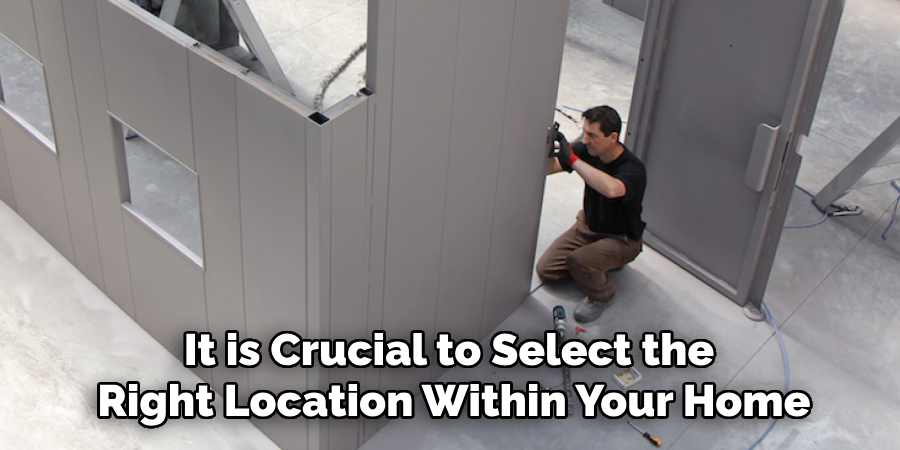
Finally, it’s vital to consider building codes and legal requirements. Different regions have specific regulations pertaining to the construction and security standards of vault rooms. Ensuring compliance not only enhances safety but also prevents potential legal issues in the future.
Tools and Materials Needed
List of tools:
- Concrete mixer
- Trowel
- Level
- Drill
- Saw
List of materials:
- Reinforced concrete
- Rebar
- Steel door
- Locking mechanism
- Insulation
- Ventilation system
- Security system
Optional:
- Fire-resistant materials
- Shelving
- Lighting fixtures
How to Build a Vault Room: Constructing the Vault Room
Step-By-Step Guide to Constructing the Vault Room
Excavation and Foundation Preparation
The first step in constructing your vault room is excavating the designated area and preparing the foundation. Begin by marking the vault room’s boundaries and digging to the required depth, ensuring that the foundation is level and solid. It’s crucial to check for underground utilities before excavation to avoid damage or legal complications.
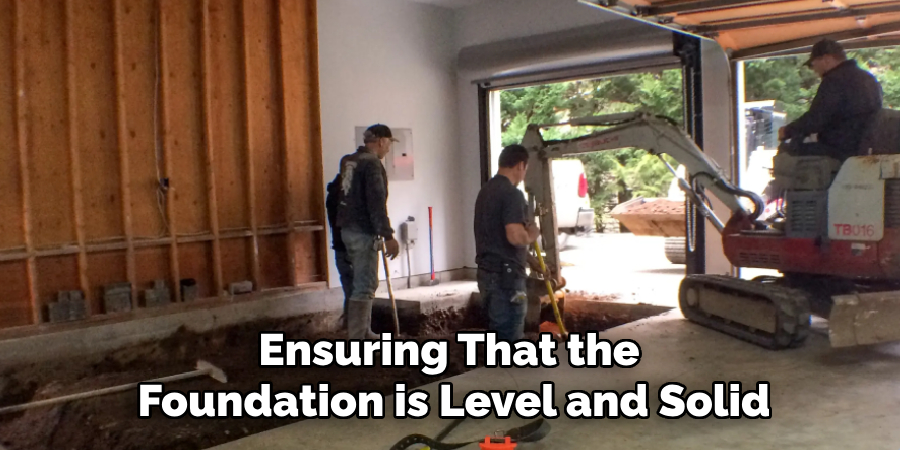
Building Reinforced Concrete Walls and Floor
Once the foundation is ready, you can construct the walls and floor with reinforced concrete. Create formwork to shape the concrete structures. Mix concrete using the concrete mixer, ensuring the proper ratio of materials for maximum strength. Pour the concrete into the formwork for the walls and floor.
Installing Rebar for Added Strength
Embed rebar into the concrete to enhance the vault room’s structural integrity. The rebar should be placed at regular intervals within the formwork before pouring the concrete. This reinforcement will provide additional strength and durability to the walls and floor, making the vault more secure.
Pouring and Curing Concrete
After placing the rebar, pour the concrete into the formwork. Use the trowel to smooth out the surface and eliminate air bubbles. Allow the concrete to cure properly, which might take several days. Proper curing is essential for ensuring the strength and longevity of the structure.
Tips for Ensuring Structural Integrity and Security
Regularly inspect the construction process to ensure that the concrete is mixed and poured correctly. Don’t rush the curing process, as this can weaken the structure. It’s also advisable to consult with a structural engineer to confirm that your vault room meets all required safety and security standards.

How to Build a Vault Room: Installing the Door and Locking Mechanism
Choosing a High-Security Steel Door
When considering how to build a vault room, selecting a high-security steel door is paramount. The door should offer robust fire and tamper resistance to safeguard your valuables against various threats. Look for doors that have been tested and certified for fire rating and break-in resistance to ensure they meet the highest safety standards.
Installing the Door Frame
The next crucial step is installing the door frame securely within the reinforced concrete walls. Begin by measuring the door opening to ensure the frame fits perfectly. Position the frame in the opening and use a level to ensure it is perfectly aligned. Secure the frame by drilling holes into the concrete and using anchor bolts to hold it in place. The secure installation of the frame is essential for the overall strength and effectiveness of the door.
Selecting a Reliable Locking Mechanism
Choosing a reliable locking mechanism depends on your security needs and convenience preferences. Options include mechanical locks, electronic locks, and biometric systems. Mechanical locks are traditional and robust, electronic locks offer keyless entry with passcodes or keycards, and biometric locks provide advanced security using fingerprints or retinal scans. Each type has its pros and cons, so select one that best fits your security needs and preferences.
Step-by-Step Guide to Installing the Door and Locking Mechanism
- Prepare the Door Frame: Ensure the frame is securely anchored in the concrete wall.
- Install the Door Hinges: Attach the hinges to the door and then to the frame, ensuring they are perfectly aligned.
- Mount the Door: With the help of an assistant, lift the door and place the hinges onto the frame. Secure the hinges with screws.
- Install the Locking Mechanism: Depending on the type of lock, follow the manufacturer’s instructions to mount and set up the lock. For mechanical locks, bolt the lock into place. Connect any necessary wiring and set up access credentials for electronic or biometric locks.
- Test the Door and Lock: Open and close the door several times to ensure it moves smoothly. Test the lock to ensure it engages and disengages correctly and that all components function as intended.
Ensuring Proper Alignment and Function
Check the spacing around the edges when the door is closed to ensure it is aligned correctly. Adjust the hinges if necessary to eliminate gaps or misalignment. The door must open and close smoothly without dragging and the lock to engage securely and effortlessly. This careful attention to detail will significantly enhance the overall security of your vault room.
Electrical and Ventilation Systems
Planning and Installing Electrical Wiring
Planning and installing electrical wiring in your vault room is crucial for ensuring proper lighting, powering security systems, and supporting other electronics. Begin by designing an electrical layout that includes the placement of outlets, lighting fixtures, and security devices. Use high-quality, insulated wiring to minimize the risk of electrical fires. Following local electrical codes and standards to ensure safety and compliance when installing the wiring.
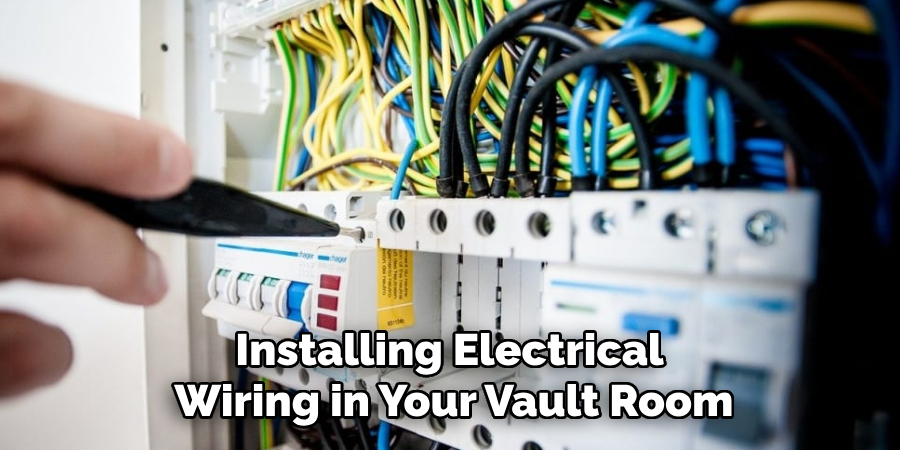
Ensuring Compliance with Electrical Safety Codes
It’s imperative to adhere to electrical safety codes to protect against potential hazards. Engage the services of a licensed electrician to install and inspect the wiring. All electrical components, including outlets, switches, and breaker panels, should be up to date with current standards. Regular inspections are recommended to ensure ongoing compliance and to address any issues that might arise over time.
Installing a Ventilation System
Proper ventilation is essential to maintaining airflow and preventing moisture buildup in your vault room. Install a ventilation system that includes both intake and exhaust fans to circulate air effectively. This system will help avoid the accumulation of dampness, which can damage stored items and impact structural integrity.
Considering Backup Power Options
Incorporating backup power options, such as batteries or generators, ensures that your vault room remains secure even during power outages. Backup power can keep vital systems like lighting and electronic locks operational. Choose reliable backup solutions and regularly test them to ensure they function correctly in emergencies.
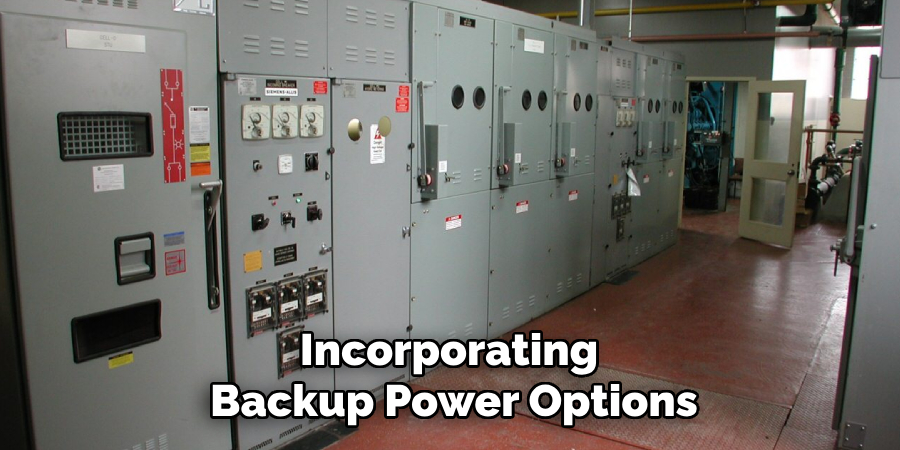
Security Measures
Installing a Comprehensive Security System
Installing a comprehensive security system is crucial to protecting the valuables within your vault room. This should include high-definition cameras strategically placed to cover all entry points both inside and outside the vault room. Motion sensors can detect any unauthorized movement, triggering alarms to alert you of potential intrusions. Choosing sensors with adjustable sensitivity is essential to minimize false alarms while ensuring reliable detection.
Integrating the Security System with Home Automation or Monitoring Services
Integrating your vault room’s security system with home automation or professional monitoring services can enhance its security. Modern home automation systems allow you to control and monitor security elements via a smartphone app, providing real-time alerts and remote access to camera footage. Additionally, professional monitoring services offer round-the-clock surveillance, ensuring immediate response to any security breaches.
Reinforcing Windows (if any) with Bars or Shatterproof Glass
If your vault room includes windows, reinforcing them is imperative to maintaining security. Install bars on the windows to physically deter break-ins, or opt for shatterproof glass that can withstand impacts. These measures significantly reduce the risk of forced entry through the windows, ensuring your vault room remains secure.
Implementing Additional Security Measures
Consider placing a safe within the vault room to further secure your valuables. A high-quality safe adds additional protection, safeguarding smaller items like documents, jewelry, and cash. Choose a safe with a combination lock, electronic keypad, or biometric access for maximum security. Also, ensure the safe is bolted to the floor or wall to prevent removal.
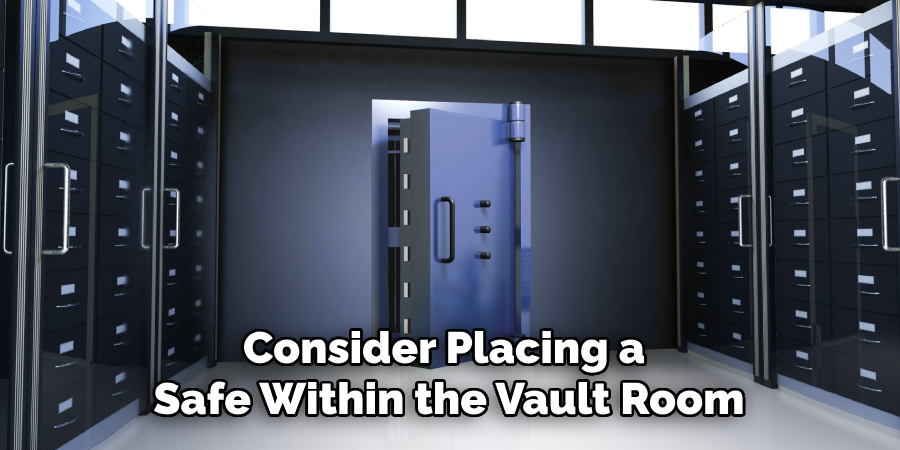
Implementing these robust security measures can significantly enhance the overall protection of your vault room, ensuring your valuables remain secure against potential threats.
Interior Setup and Customization
Installing Shelving and Storage Solutions
Install sturdy shelving and storage solutions within your vault room to organize your valuables. Adjustable metal or wooden shelves can accommodate items of varying sizes, ensuring optimal use of space.
Adding Fire-Resistant Cabinets or Safes
Protect particularly valuable or sensitive items by incorporating fire-resistant cabinets or additional safes. These units can withstand extreme temperatures, offering an extra layer of security for important documents, collectibles, and other essentials.
Setting Up Lighting Fixtures for Visibility
Proper lighting is crucial for viewing and accessing your stored items with ease. Install efficient LED lighting fixtures that provide bright, even illumination throughout the vault room. Consider motion-activated lights for added convenience and energy savings.
Personalizing the Space According to Your Needs
Customize the interior of the vault room to suit your specific requirements. Whether you need a small workspace, additional storage compartments, or designated areas for different types of valuables, arrange the space to maximize functionality and comfort.
Final Safety and Security Checks
Conducting Thorough Inspections to Ensure Structural Integrity and Security Features
Before deeming your vault room complete, it’s crucial to conduct thorough inspections to ensure the structural integrity and the effectiveness of all security features. Check walls, ceilings, and floors for any signs of wear or potential weaknesses that could compromise security.
Testing the Locking Mechanism and Security System
Test the locking mechanism and the entire security system to ensure everything functions as intended. Verify that all cameras, alarms, and motion sensors are operational. Run multiple scenarios to test the system’s responsiveness and detection capabilities.
Verifying the Functionality of the Ventilation and Electrical Systems
Inspect the ventilation system to confirm proper airflow and the absence of moisture buildup. Test all electrical outlets, lighting fixtures, and backup power solutions to ensure uninterrupted functionality. Conduct these checks regularly to maintain optimal conditions.
Making Any Necessary Adjustments or Improvements
Based on the inspections and tests, make any necessary adjustments or improvements. Address any identified issues promptly to prevent future complications. Regular maintenance will help ensure that your vault room remains secure and fully functional.
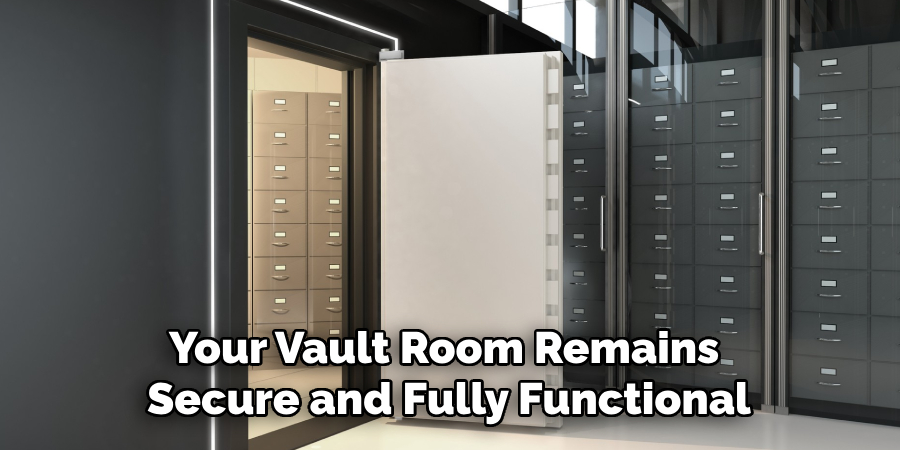
Legal and Insurance Considerations
Ensuring Compliance with Local Building Codes and Regulations
When constructing a vault room, ensuring compliance with local building codes and regulations is essential. Consult with a professional contractor familiar with these requirements to avoid legal issues and guarantee that your vault room meets all safety standards.
Informing Your Insurance Company About the Vault Room
Notify your insurance company about the existence of your vault room to keep them informed of any updates that may affect your policy. This transparency can help in the event of a claim.
Considering Additional Insurance Coverage for Valuables Stored in the Vault Room
Evaluate the need for additional insurance coverage for the valuables stored in your vault room. This can provide extra peace of mind and financial protection against potential losses.
Conclusion
A well-built vault room provides unparalleled security and peace of mind, safeguarding your most valuable possessions from theft, fire, and other risks. By understanding how to build a vault room, incorporating advanced security features, and ensuring compliance with local regulations, you create a fortress that offers both physical and psychological benefits. Following professional advice and implementing all recommended safety measures, such as professional monitoring services, reinforced windows, and fire-resistant storage solutions, is crucial.
Regular inspections and updates further enhance the room’s effectiveness. Investing in a robust vault room is not just about protecting valuables; it’s about investing in your peace of mind. Knowing that your treasured items are secure permits you to focus on other aspects of life confidently and confidently. Prioritize a comprehensive approach to building and maintaining your vault room to enjoy its full range of benefits.
About
Safety Fic is a distinguished figure in the world of Diy design, with a decade of expertise creating innovative and sustainable Diy solutions. His professional focus lies in merging traditional craftsmanship with modern manufacturing techniques, fostering designs that are both practical and environmentally conscious. As the author of diy, Safety Fic delves into the art and science of Safety Fic-making, inspiring artisans and industry professionals alike.
Education RMIT University
(Melbourne, Australia) Associate Degree in Design (Safety Fic) Focus on sustainable design, industry-driven projects, and practical craftsmanship. Gained hands-on experience with traditional and digital manufacturing tools, such as CAD and CNC software.
Nottingham Trent University
(United Kingdom) Bachelor’s in diyfastly.com and Product Design (Honors) Specialized in product design with a focus on blending creativity with production techniques. Participated in industry projects, working with companies like John Lewis and Vitsoe to gain real-world insights.
Publications and Impact
In diy, Safety Fic his insights on indoor design processes, materials, and strategies for efficient production. His writing bridges the gap between artisan knowledge and modern industry needs, making it a must-read for both budding designers and seasoned professionals.
